Working days
Add calendars that include working days and exclude non-working days to align with public holidays, half-day holidays, and so on. These calendars can also be used for seasonality purposes.
Related pages:
Change the data format (daily average in Analytics)
Publish a budget, forecast or data in another worksheet tab (Budgets and Forecasts)
Working days calendars are useful when you want to calculate the daily average in Analytics. Using working days, rather than days in calendar months, gives you more meaningful results. The average value is calculated by dividing the value in each period by the number of days in each period. So, for example, if there are 31 calendar days but only 25 working days in a month, using a calendar month will not accurately reflect the daily average value.
Working day calendars are also used in Budgets & Forecasts. You can spread a total proportionally according to a calendar, to account for seasonality across the budget or forecast period. You can also publish a budget or forecast to a calendar, to split the budget period value proportionally by the number of days in that calendar period.
In the Phocas menu, click Administration > Working Days. The Working Days page displays a list of all your working day calendars. You can edit and delete these as required, and add new calendars.

Create a working days calendar
On the Working Days page, click New.
Enter the calendar details:
Calendar Name: Enter a unique display name.
Start Year: Specify the starting point for use in automatically generating working days. This is the start of the date range that the calendar covers.
End Year: Specify the endpoint for use in automatically generating working days. This is the end of the date range that the calendar covers.
Exclude Weekends: Select this checkbox if you do not want weekends to be included as working days when automatically generating working days.
Click Save.
Proceed to edit the new calendar to add non-working days or partial working days as required.
Edit a calendar
The result of creating a working days calendar (above) is the addition of a calendar to Phocas for all the days in the specified date range, which might include weekends. The next step is to edit the default calendar setup to suit your needs. For example, you might want to:
Exclude some days or mark some days as partial working days.
Completely change the setup to create a seasonality calendar. See delete all days below.
Edit an existing calendar if you make a mistake during setup or your circumstances change.
If you have just created a working days calendar, its setup page opens after you click Save. If you want to edit an existing calendar, on the Working Days page, click the calendar’s name (blue link) to open its setup page.
By default, a calendar' setup page opens on the Calendar tab, where you can change the calendar’s name, if required.
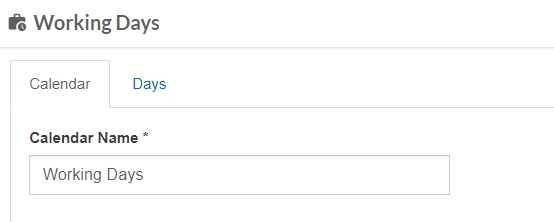
Click the Days tab to set up the working days and change the hours in a working day. You can do this in two ways, using either the Calendar (default) view or Grid view.
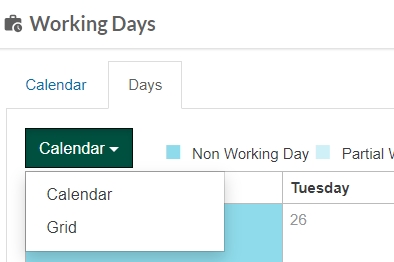
Calendar view
Use the Calendar view to quickly set the working days. Color coding differentiates the non-working days (blue) and partial working days (pale blue) from the working days (white). For example, in the image below, Saturdays and Sundays are non-working days, Tuesday 12 April is a half-day and all other days are working days.
Use the date selector on the top right of the grid to move between the months in the calendar.
Click a working day to change it into a non-working day. It turns blue.
Click the day number in the corner of a day to open the Working Day window, where you can enter a value for more than or less than a single day to be allocated to a single calendar day. For example, 0.5 equals a half day.
Use the date selector on the top right of the grid to move between the months in the calendar.
Click a non-working or partial working day to change it back into a working day.
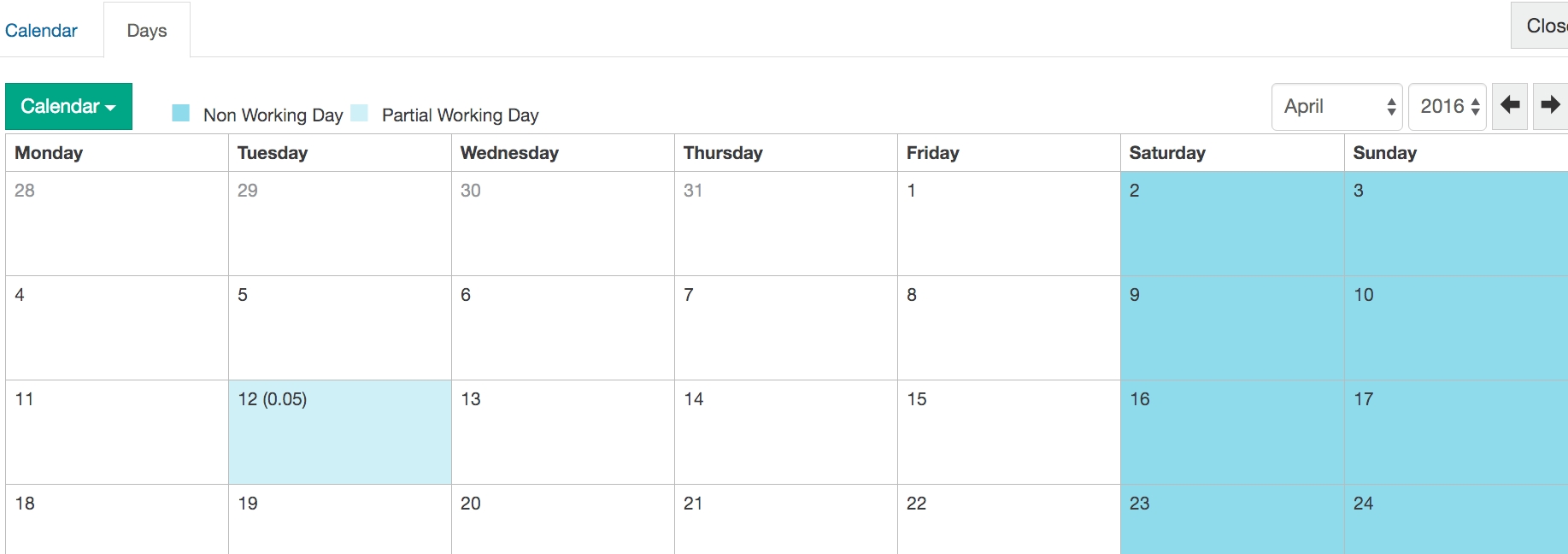
Grid view
Use the Grid view to add, edit and remove working days. The grid displays only the working and partial working days.
Use the date selector on the top right of the grid to move between the months in the calendar or the page links at the bottom of the grid to move between the days. Alternatively, click the Paginate button at the bottom of the grid to view all the days on one page.
Click on a day to open the Working Day window, where you can enter a value for more than or less than a single day to be allocated to a single calendar day. For example, 0.5 equals a half day.
Add a new working day: Click New.
Remove a working day: Select its row and click Delete.
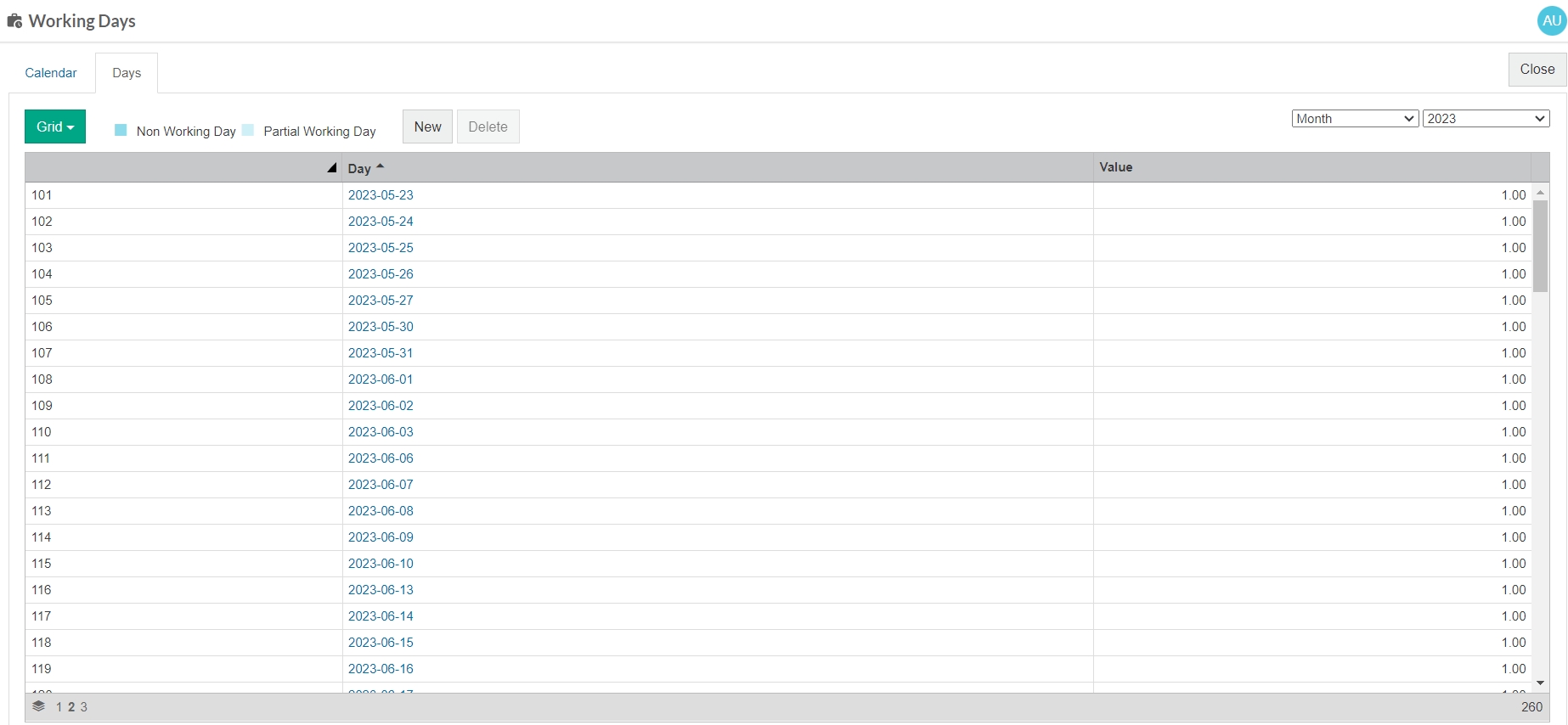
Delete all days in a calendar
When you create a calendar, it is prepopulated with all the days in the period from the start year to the end year. This mightn't be desirable, especially if you want to set up a calendar for seasonality purposes. To populate the time periods (such as months) from scratch, you can quickly delete all the days in a calendar as follows:
Open the working days calendar page, click the Days tab, then switch to Grid view.
Click the Paginate button at the bottom of the grid to view all the days on one page.
Select all the day rows and click Delete. As a result, you get a blank working days calendar, so you can now start from scratch. Proceed to add new working days to the calendar.
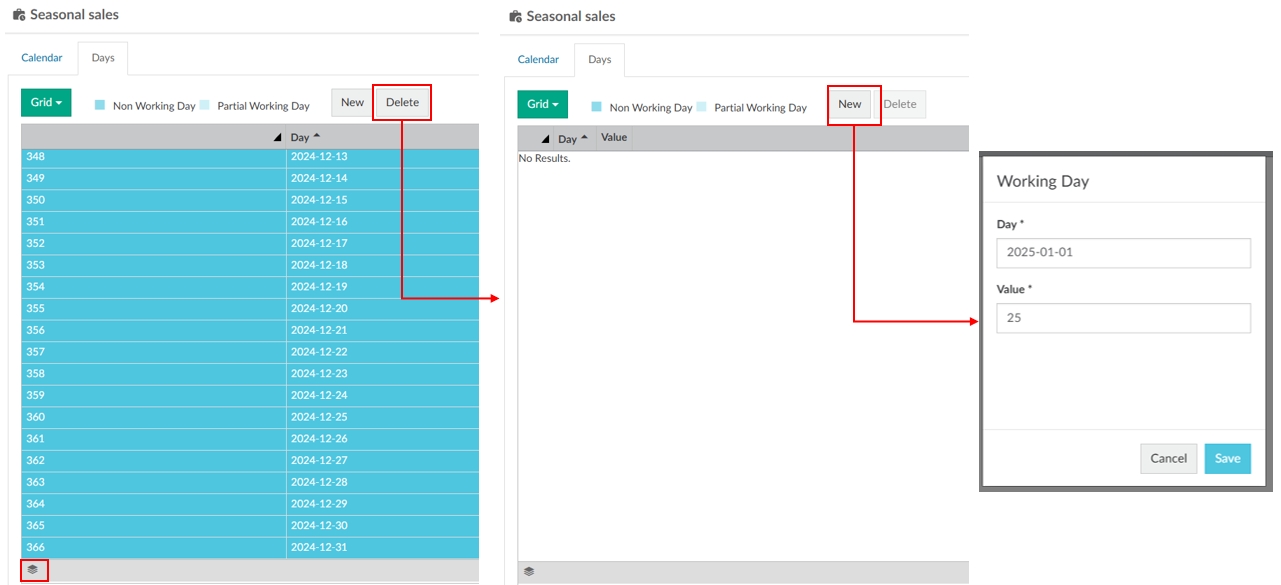
Set up a seasonal calendar
Seasonal calendars provide a way to adjust data to consider the impact of seasonal variations (such as holiday periods, special promotions, and so on) by defining the proportion of each period.
While not typically used in Analytics, seasonal calendars can be used in Budget & Forecasts to spread a total proportionally across the budget or forecast period. See the Spread page for more information and an example.
Last updated
